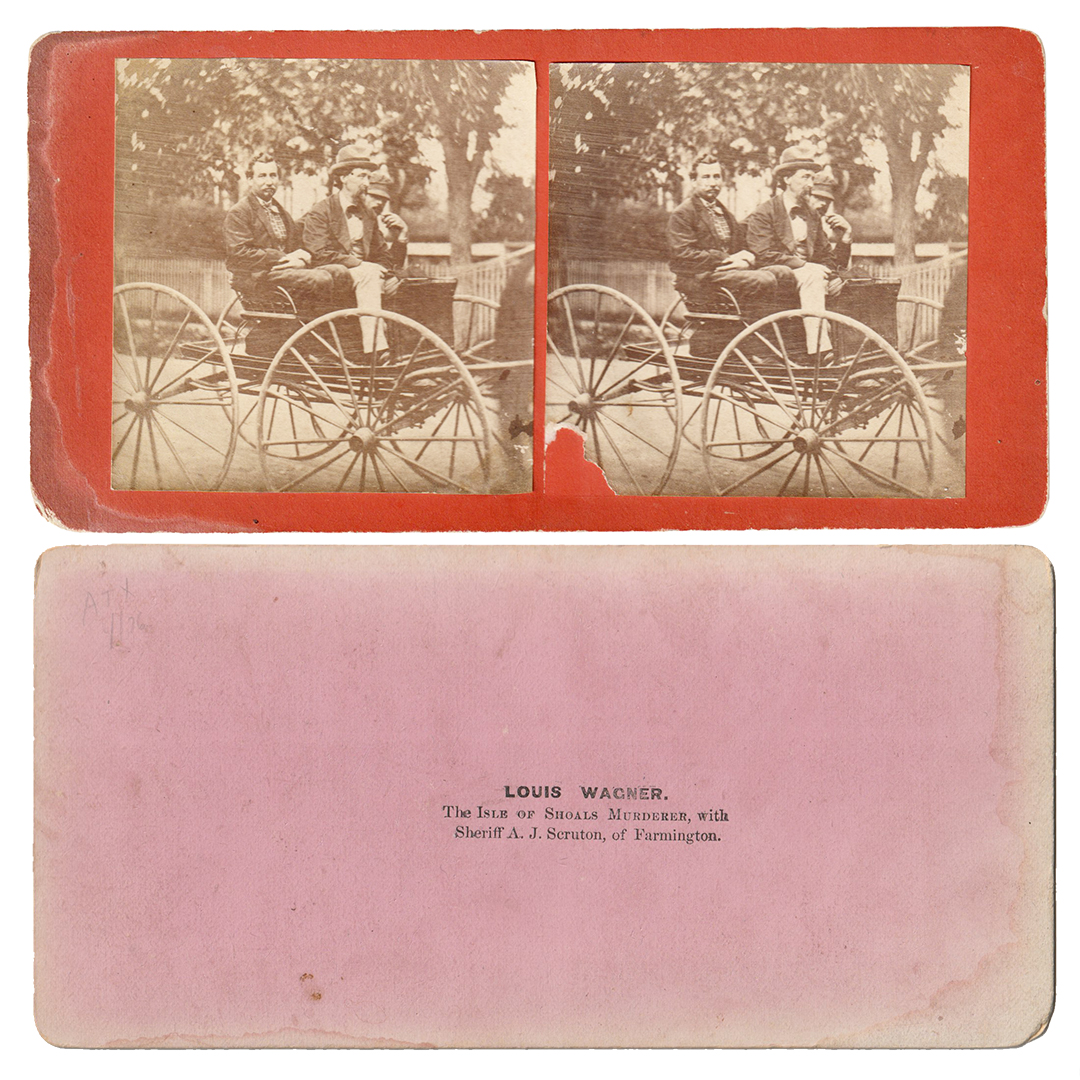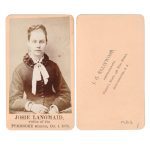Description
Original 1875 Stereoview of Louis Wagner Convicted Axe Murderer Prior to the Gallows
An original stereoview of Louis Wagner ‘The Isle of Shoals Murderer, with Sheriff A. J. Scruton, of Farmignton.’ Likely produced by a local (unidentified) photographer as opposed to a mass produced commercial album filler.
Louis H. F. Wagner hanged June 25, 1875 was a German-born fisherman who arrived in the United States around 1865. Eight years later he was accused of the axe murders of two Norwegian women, Anethe Matea Christensen and Karen Christensen, on Smuttynose Island in the Isles of Shoals of Maine and New Hampshire. Later convicted of the March 6, 1873, crime, he was sentenced to be hanged. After a failed escape attempt, Wagner became the fourth to last person to be executed by the State of Maine. Despite an aggressively prosecuted case, so vehement was his denial that doubts still remain as to his guilt. In 1875, poet Celia Thaxter wrote and published an account of the ‘Smuttynose Murders’ in Atlantic Monthly. It was titled A Memorable Murder and remains a classic of American true crime writing.
Author Anita Shreve fictionalized the crime in her bestselling 1996 novel The Weight of Water, which claims that Wagner was falsely convicted. In the 2000 film adaptation, Wagner was portrayed onscreen by Irish actor Ciaran Hinds.
This genre of stereoview was produced as sensational ‘album fillers’ by photographers to capitalize and profit from the tragedies of the day. Often photographers across the country would have access to purchase the rights or simply ‘steal’ the image, in order to reproduce the image, profiteering from the tragedy while satisfying the bloodlust and morbid curiosity of the public.
Stereoviews were first described in 1832 by English physicist Sir Charles Wheatstone, the process was improved by Sir David Brewster in 1849, and was popular in the United States and Europe from about the mid-1850s through the early part of the 20th century. Stereoviews consist of two images created with a stereo camera, a type of camera with two or more lenses. This allows the camera to simulate human binocular vision, and therefore gives it the ability to capture three-dimensional images, a process known as stereo photography. The images are side by side, either on glass or paper pasted onto a sturdy card, stereoviews were meant to be observed through a special viewer, called a stereoscope, that created the effect of a three dimensional image.






